What the new R7 could mean for sportsbike sales
Sportsbike sales have been on the wane for a long time now. No longer do riders need to be on a relatively uncomfortable, 170 km/h in first gear sportsbike, to get good power, suspension and brakes.
Now when I was a boy….
20 years ago we favoured Fireblades, GSX-Rs or the like to get great suspension and stoppers. Today’s nakeds run almost sportsbike geometry but combine that with fairly comfortable ergonomics, while adventure bikes now boast more power and torque than yesterday’s superbikes and ride on today’s top shelf suspension and braking systems.
I would also argue that on most twisty public back roads that don’t have perfect billiard table tarmac the likes of today’s GS, Multistrada V4 or KTM 1290 Adventure machines would hand all but the most committed sportsbike riders their arse when conditions are not absolutely perfect.
Pose value versus performance
It also seems that a lot of today’s youth market favour pose value over performance, a bit like the cruiser market has always been.
Or has this always been the case?
I know it certainly never was for me, it was only later in life that I first bought a bike primarily on looks and that was the first model Fireblade SP, but it is not as if that didn’t have enough performance to go with it.
‘Road Safety’
Today’s inane focus on speed as the be all and end all of road safety has led to massive penalties. The risk of your pride and joy being crushed by authorities is a particularly draconian tool in their armoury for their war on speed.
This certainly has an affect on the appeal of pure sportsbikes on the street.
You would think ‘road safety’ would pertain to making our roads safe. To me that would mean better road surfaces and the removal of roadside obstacles that are waiting to kill or maim us if we do end up sliding down the road. But no, instead we get wire rope barriers and ever reducing speed limits. And they call that ‘road safety’…
Has Superbike racing killed the category of motorcycles it originally aimed to promote?
Rising prices have also played their part as manufacturers produce their machines to a recipe dictated by Superbike racing rules. Most Superbike race series limit the modifications allowed on the machines in the aim of achieving some sort of artificial parity in competition.
This has led to higher and higher specification base machines and limited-edition specials that address one or two components inside the engine that the machine requires to be competitive in racing. Components that due to racing rules tuners are not allowed to change when preparing a machine for competition.
Does this mean that Superbike racing has effectively been killing the sales of the sportsbikes it was first introduced to promote?
Does Yamaha have the answer with the new R7
What got me thinking on the state of the sportsbike market was the overnight release of Yamaha’s new R7.
This new R7 is nothing like that limited-edition competition based R7 raced 20 years ago by the likes of Noriyuki Haga and Colin Edwards, when World Superbike rules dictated a capacity limit of 750 cc for four-cylinder motorcycles.
The 1999 Yamaha YZF-R7 was really special but ultimately failed in its quest to conquer World Superbike as the rules of the time favoured twin-cylinder motorcycles. Ducati’s 996 was effectively made for the rules and many would say the rules were written for Ducati. This forced Honda to then produce their own V-Twin and it was Honda that eventually broke the Ducati stranglehold on World Superbike with the twin-cylinder VTR-SP series.
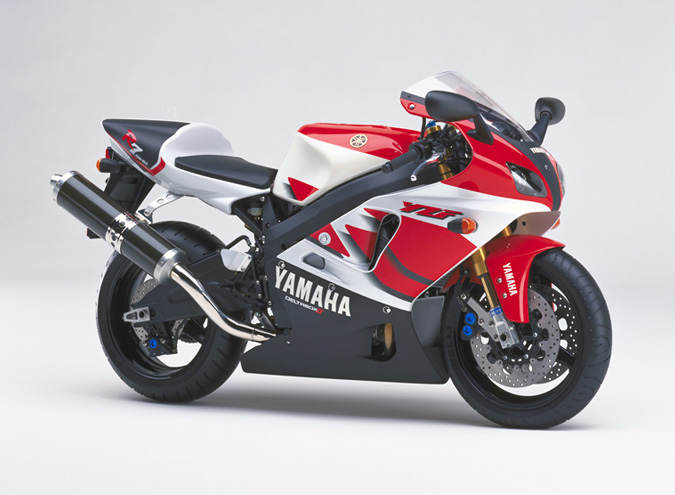 We believe only two or three of the 500 YZF-R7 motorcycles produced made it to Australia and they had a price tag of around $50,000. Add the full race kit and you could easily be spending north of 150k, and this was back in 2000… Then in 2003 World Superbike rules allowed four-cylinder motorcycles to displace up to 1000 cc, which effectively killed the 750 cc sportsbike overnight.
We believe only two or three of the 500 YZF-R7 motorcycles produced made it to Australia and they had a price tag of around $50,000. Add the full race kit and you could easily be spending north of 150k, and this was back in 2000… Then in 2003 World Superbike rules allowed four-cylinder motorcycles to displace up to 1000 cc, which effectively killed the 750 cc sportsbike overnight.
The new R7 is nothing like the old R7
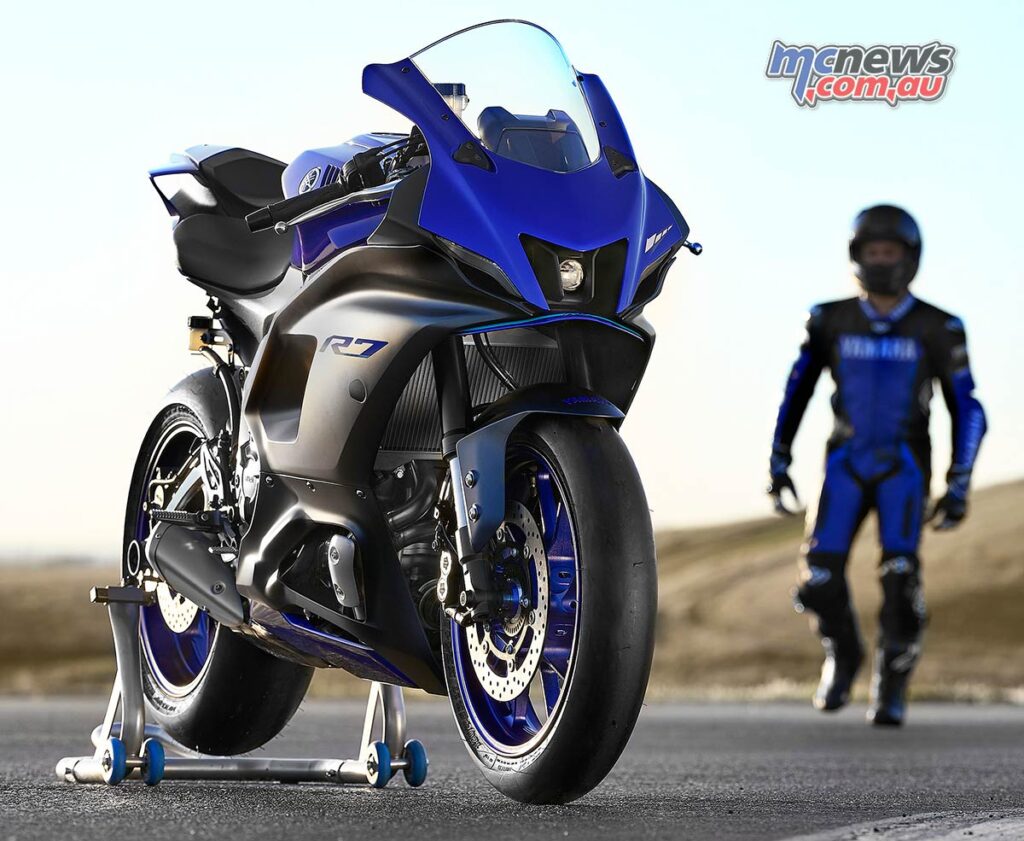
The new R7 is not designed to be anything like the original R7. That bike was designed to conquer the racetrack, the new R7 is designed to conquer the sales charts and put bikes on the road.
Here in December from 14k ride away
To that end Australia will receive two versions of the R7, a learner legal 655 cc model designed specifically to meet Australia’s unique LAMS registration scheme, alongside another R7, dubbed the HO in Australia, that is equipped with the same 689 cc engine that the rest of the world receives.
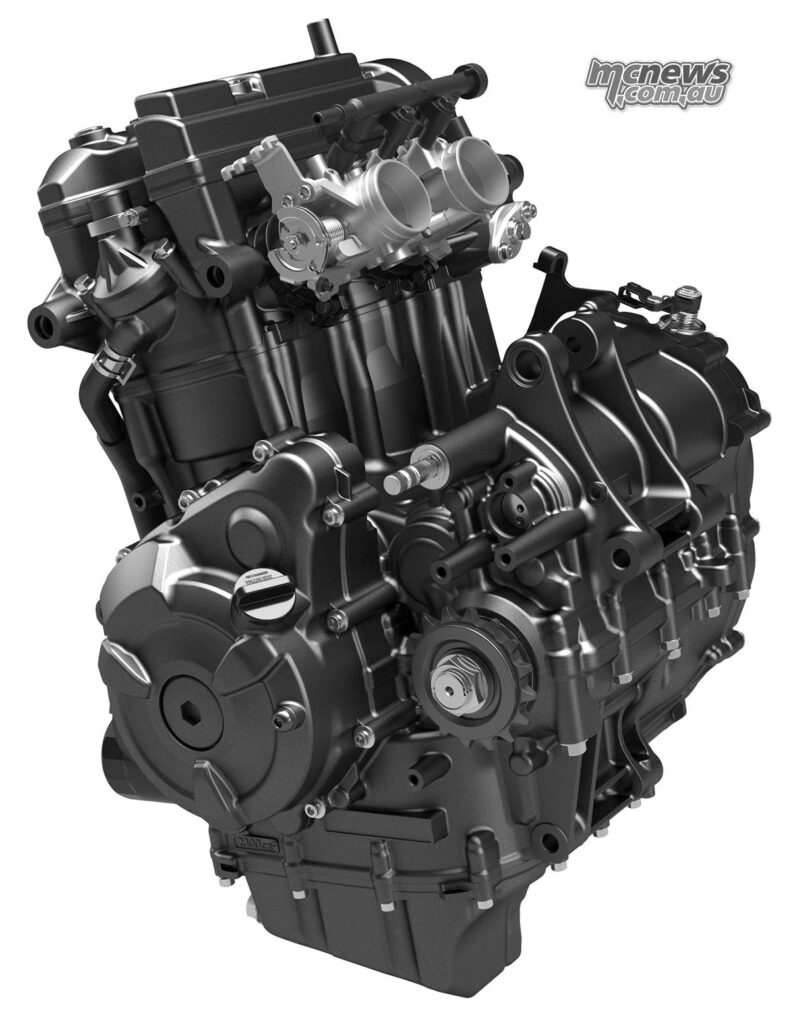
This engine is a proven package that has seen duty in the MT-07 and Tenere. In MT-07 guise the 689 cc parallel-twin makes just under 75 horsepower at 9000 rpm and 68 Nm at 6500 rpm. In the 655 cc LAMS configuration it makes 52 horsepower at 8000 rpm and 58 Nm of torque at a low 4000 rpm. No official power figures have yet been released for the new YZF-R7 but we are led to believe they are the same as the current MT-07, which for model year 2021 gained Euro5 certification. We do know that the R7 will run different gearing and use a slip-assist clutch while a quick-shifter will be an optional accessory.
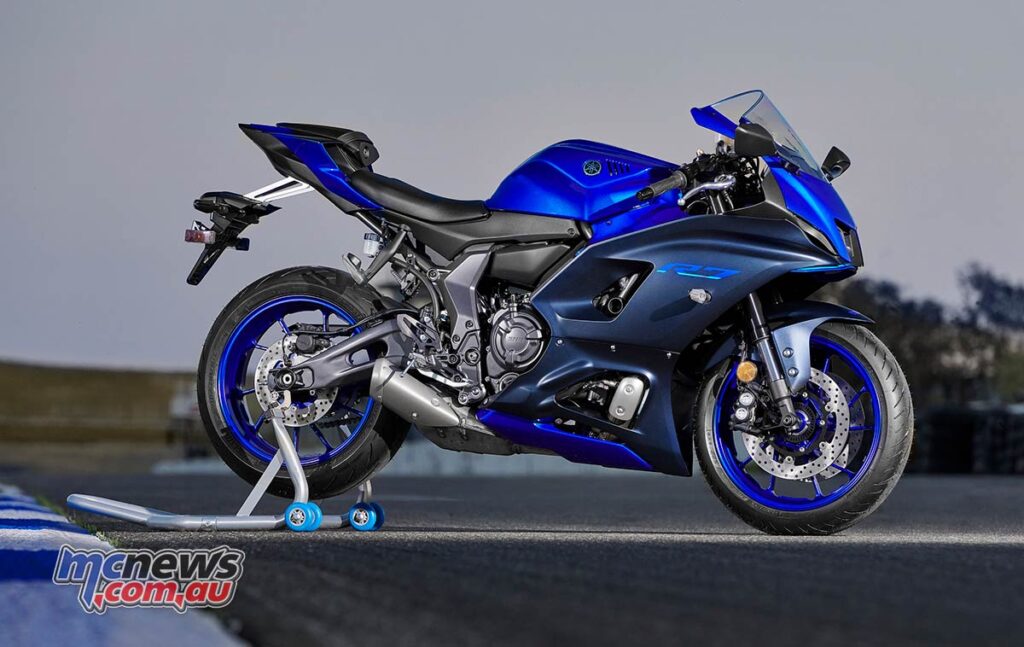
It is safe to say that the new YZF-R7 will be a huge winner in the learner segment. It looks great, and that LAMS specification engine punches better than the spec’ sheet suggests. It will be a rewarding ride down a twisty back road I have no doubt.
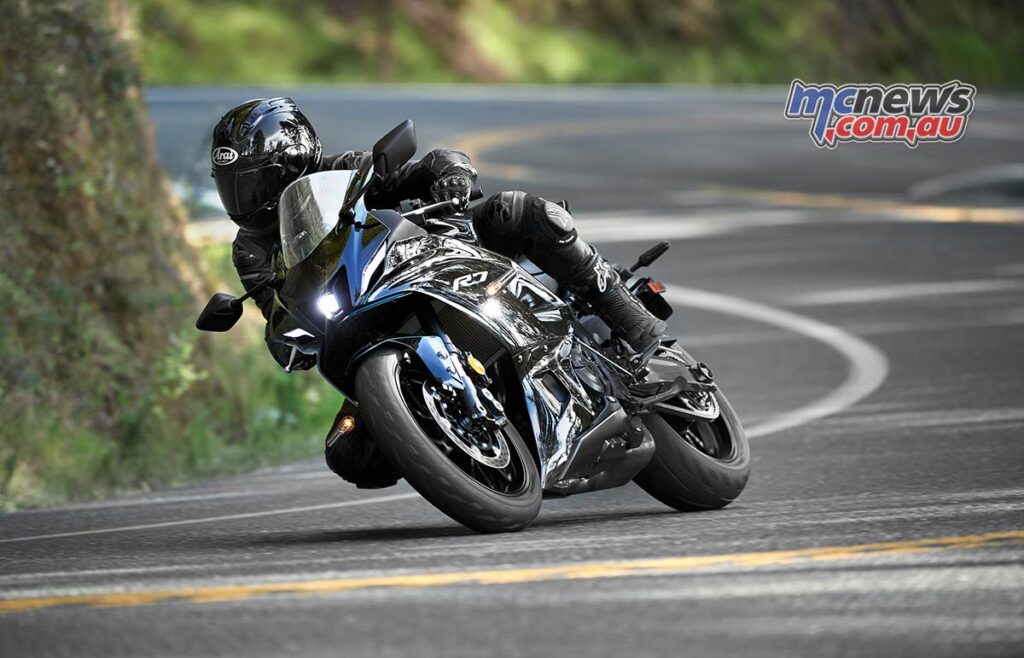
The R7 should make an ideal and affordable stepping stone up from the hugely successful YZF-R3 and be responsible for many riders continuing their riding in a sports styled package rather than opting for a naked. Which could then keep them on sportsbikes for many years to come, thus my belief that the new R7 could, eventually, help revitalise the entire sportsbike market.
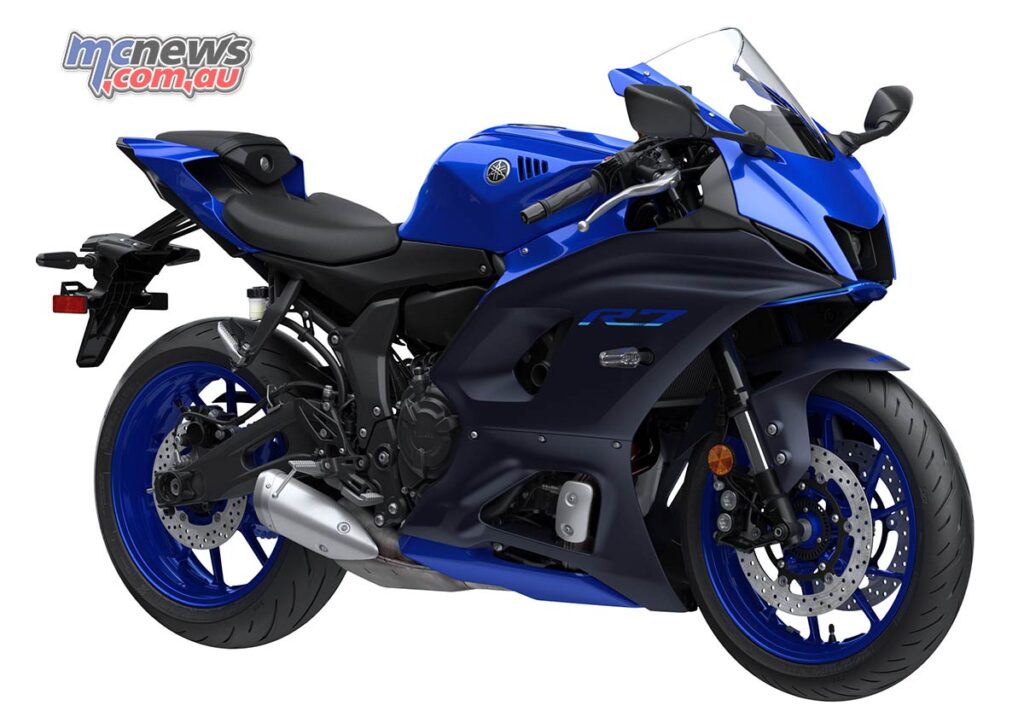
The suspension is not superbike spec’, it doesn’t need to be. The chassis looks capable enough with fully-adjustable KYB inverted forks and preload/rebound adjustable shock.
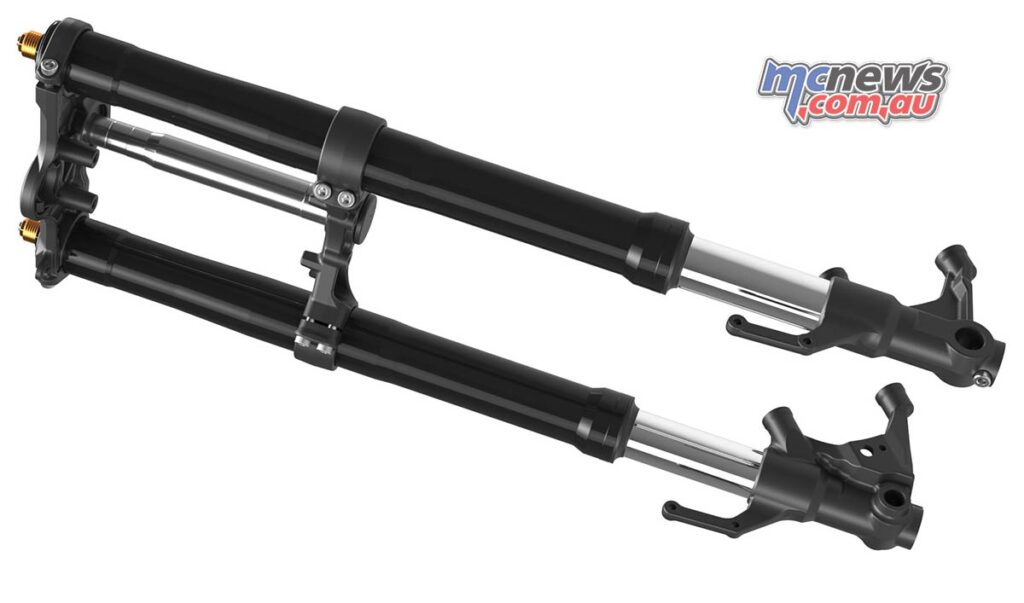
At 188 kg with a full 13-litre fuel tank the R7 should seem spritely enough for plenty of fun and Yamaha claims its flanks are the slimmest in their supersport line-up, including the R3.
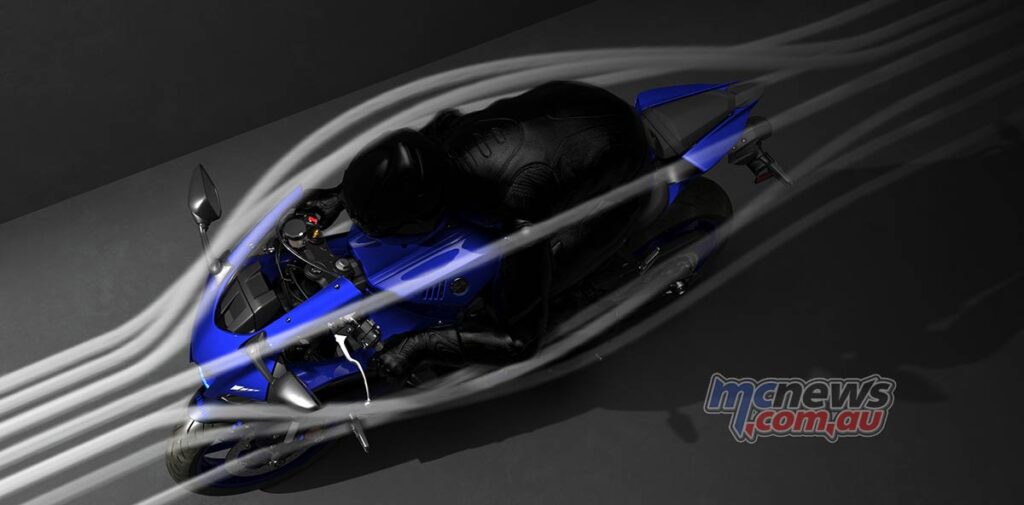
Chassis geometry is more sports focussed than anything else this engine has been used in with a more rigid steel frame along with a braced swingarm pivot for more sporting potential.
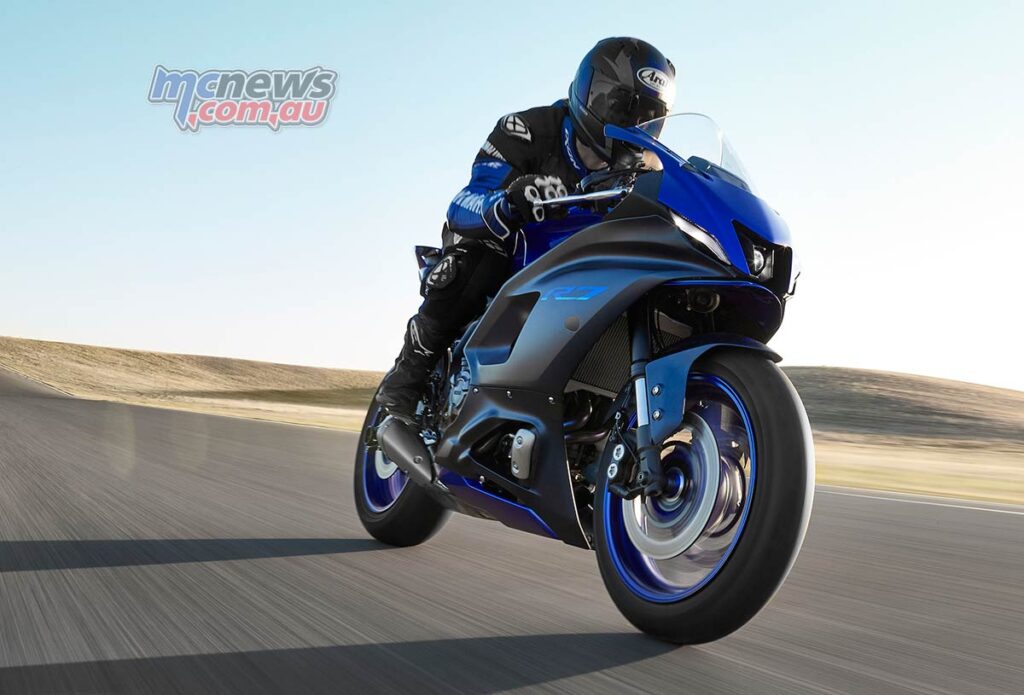
And of course clip-on bars combine with a sporty riding position and modern TFT instrumentation. Weight bias is 51/49 front to rear.
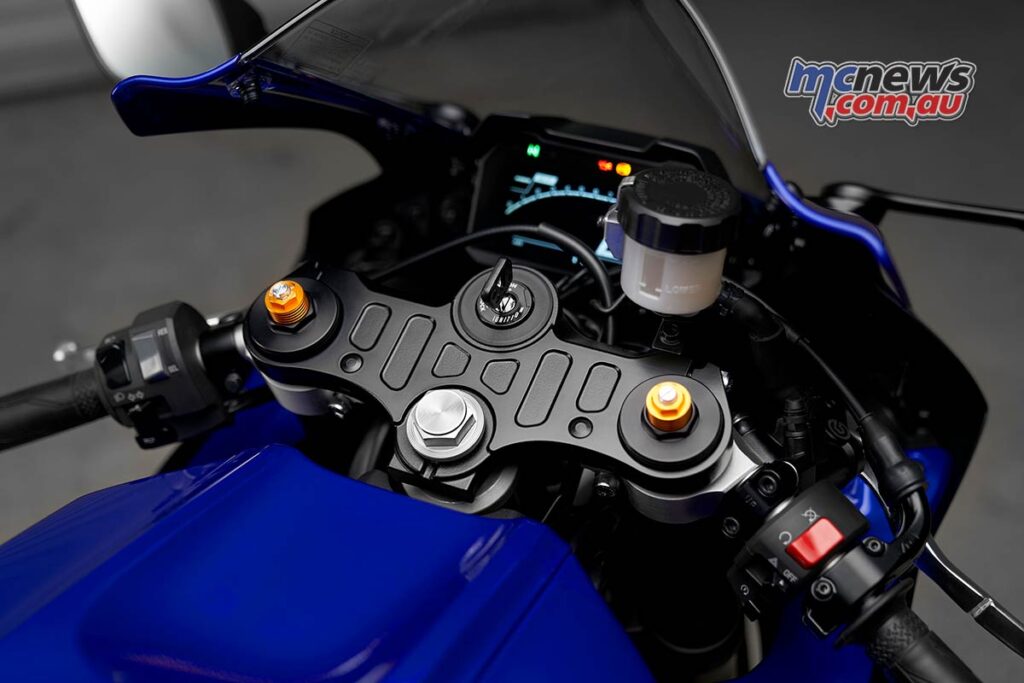
Stoppers have also been upgraded from the MT-07 with the new R7 being the first Yamaha model to feature a radial Brembo master-cylinder pushing fluid through to the four-piston calipers which clamp 298 mm disc rotors.
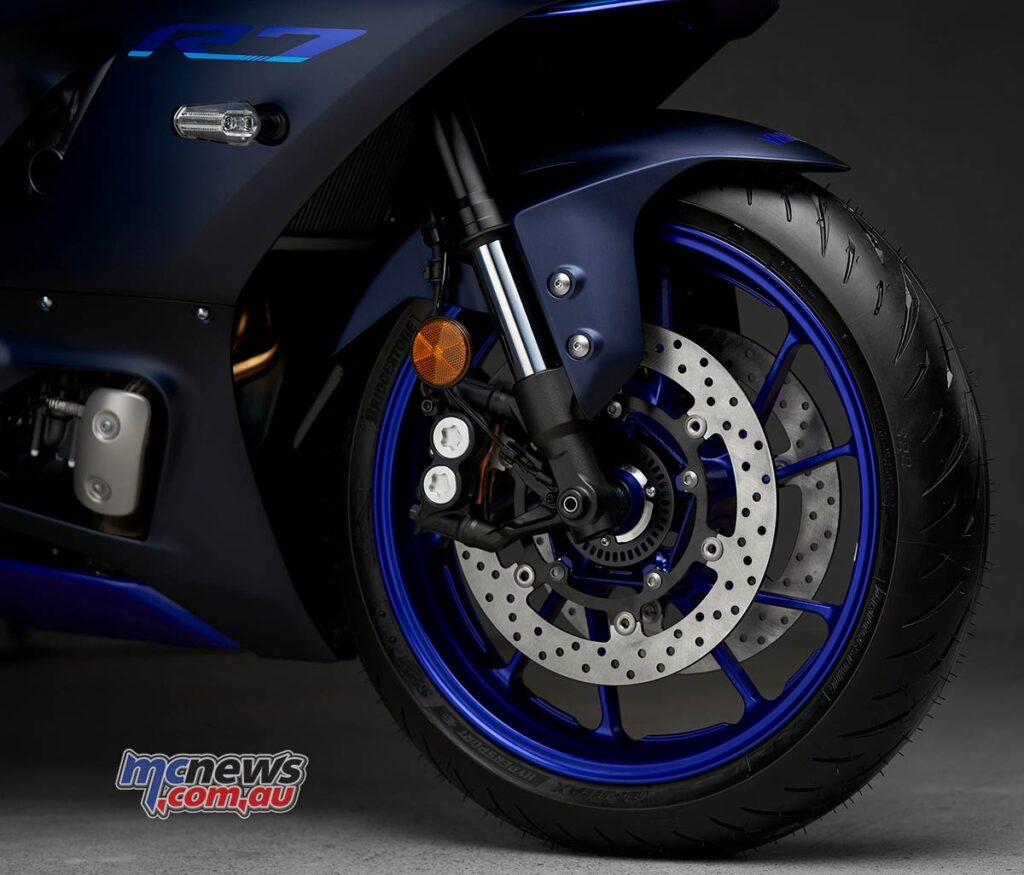
Plenty of the promotional images feature bikes at the track with mirrors removed which means Yamaha are really pitching to the sporting angle. Could we see an R7 based race series alongside the likes of the curent R3 Cup that is raced here in Australia? Racing is in Yamaha Australia’s DNA perhaps more than any other country that Yamaha operates in, thus if it is to happen, one of the most likely places for such a series could be right here.
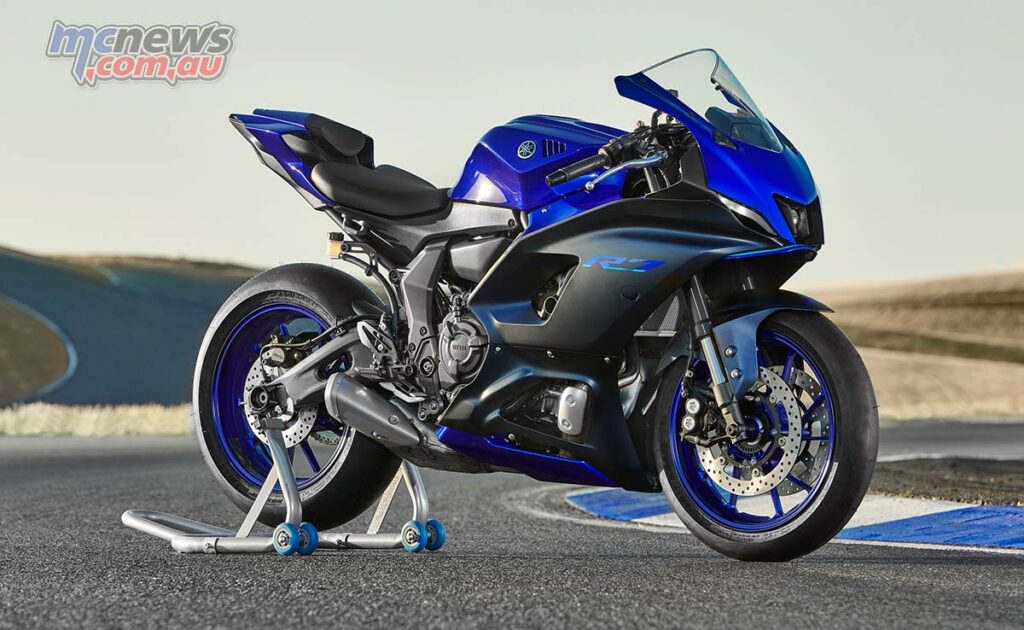
The new R7 is schedule to arrive in Australia this December and will be priced at $13,999 ride away for the LAMS variant while the full power version will retail for $14,999 ride away.
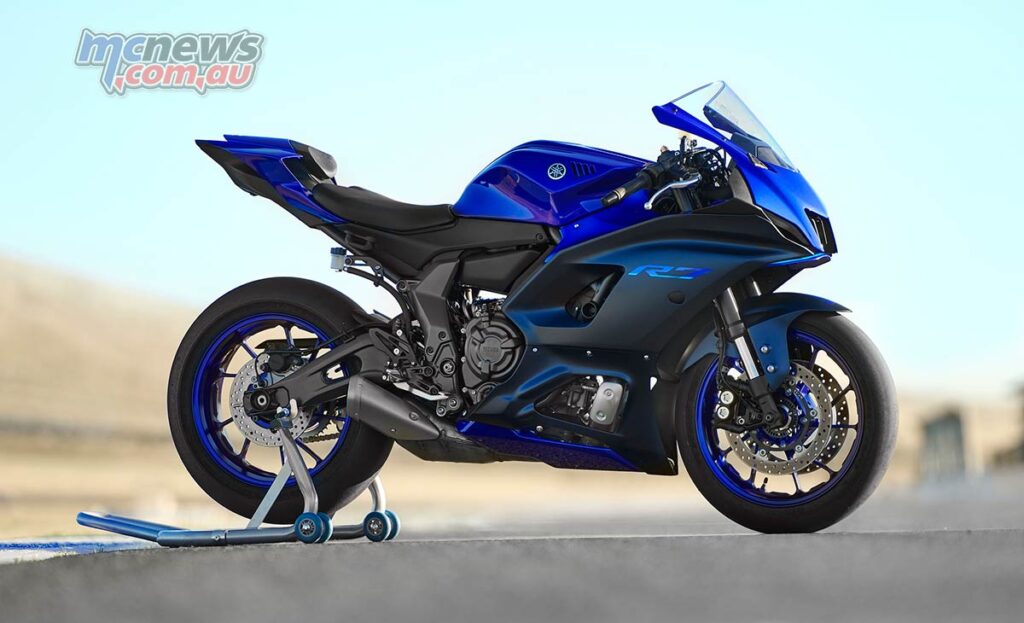
I think, and hope, it will be a roaring success that potentially revitalises the sportsbike market. Well played Yamaha.
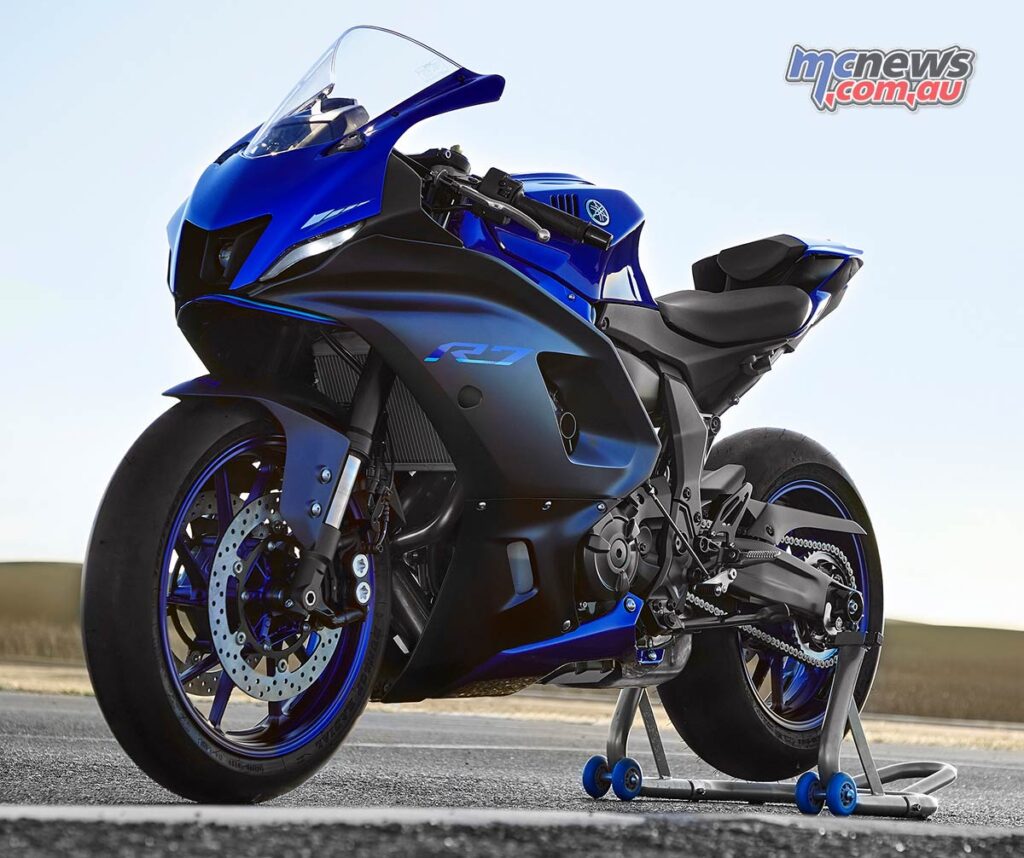
| 2022 Yamaha YZF-R7 Specifications | |
| Engine type | Liquid-cooled, 4-stroke, DOHC inline twin-cylinder; 4-valves per cylinder |
| Displacement | LA: 655cc / HO: 689cc |
| Bore x stroke | LA: 78.0 mm x 68.6 mm / HO: 80.0 mm x 68.6 mm |
| Compression ratio | 11.5 : 1 |
| Fuel delivery | Fuel Injection |
| Starter system | Electric |
| Transmission system | Constant mesh six-speed w/ A&S clutch |
| Final Transmission | Chain |
| Frame | High tensile steel Deltabox |
| Front suspension | KYB 41 mm USD forks, preload, rebound and compression adjustable; 130mm travel |
| Rear suspension | Linked monoshock, preload and rebound adjustable; 130mm travel |
| Front brake | Dual 298 mm rotors, radial four-piston calipers, Brembo radial master-cylinder |
| Rear brake | Single 245 mm rotor, Nissin caliper |
| Wheels | 10-spoke cast alloy wheels |
| Tyres | Bridgestone BATTLAX S22, 120/70-17, 180/55-17 |
| Overall length | 2070 mm |
| Overall width | 705 mm |
| Overall height | 1160 mm |
| Caster Angle | 23.7-degrees |
| Trail | 90 mm |
| Wheelbase | 1395 |
| Seat height | 835 mm |
| Min ground clearance | 135 mm |
| Wet weight | 188 kg |
| Fuel tank capacity | 12.8 L |
| Colour | Team Yamaha Blue, Performance Black |
| Warranty | 24 months |
| Lights & Dash | LED lighting, LCD dash |
| Price – YZF-R7 HO | $14,999 Ride-away |
| Price – YZF-R7 LA | $13,999 Ride-away (LAMS) |
2022 Yamaha YZF-R7 Image Gallery
Source: MCNews.com.au
